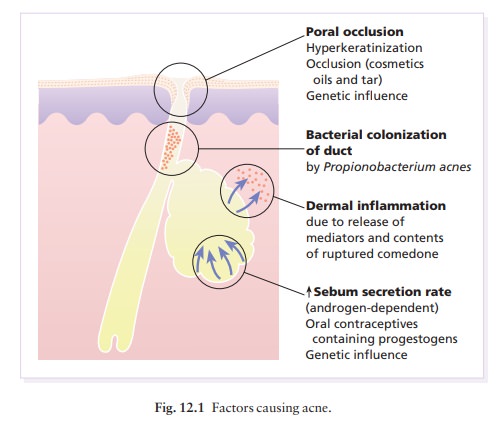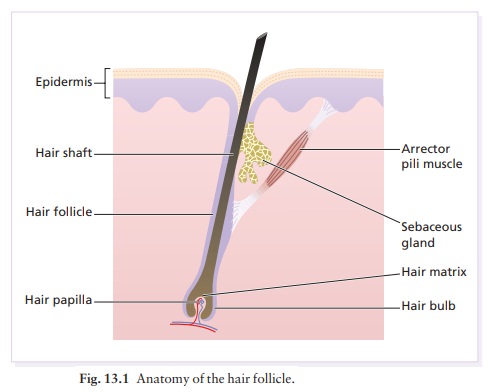Chapter: Clinical Dermatology: Sebaceous and sweat gland disorders
Sebaceous glands
Sebaceous
glands
Most
sebaceous glands develop embryologically from hair germs, but a few free glands
arise from the epider-mis. Those associated with hairs lie in the obtuse angle
between the follicle and the epidermis (Fig. 13.1). The glands themselves are
multilobed and contain cells full of lipid, which are shed whole (holocrine
secretion) during secretion so that sebum contains their remnants in a complex
mixture of triglycerides, fatty acids, wax esters, squalene and cholesterol.
Sebum is discharged into the upper part of the hair follicle. It lubricates and
waterproofs the skin, and protects it from drying; it is also mildly
bacteriocidal and fungistatic. Free sebaceous glands may be found in the eyelid
(meibomian glands), mucous membranes (Fordyce spots), nipple, peri-anal region
and genitalia.

Androgenic
hormones, especially dihydrotestos-terone, stimulate sebaceous gland activity.
Human sebaceous glands contain 5α-reductase,
3α- and 17α-hydroxysteroid dehydrogenase, which convert weaker
androgens to dihydrotestosterone, which in turn binds to specific receptors in
sebaceous glands, increasing sebum secretion. The sebaceous glands react to
mater-nal androgens for a short time after birth, and then lie dormant until
puberty when a surge of androgens produces a sudden increase in sebum excretion
and sets the stage for acne.

Related Topics